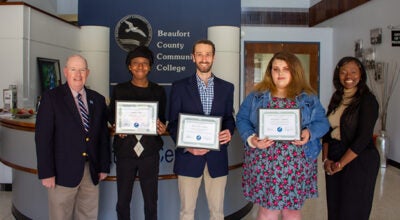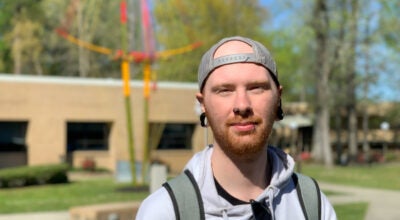ECU prof leading Antarctica research
Published 9:53 pm Thursday, November 15, 2012

Reide Corbett and his team will likely visit and work from Palmer Station, one of four permanent U.S. research stations on Antarctica. (Submitted photo/ECU)
ECU News Release
In an effort to better understand processes that provide the fuel for primary-production in the iron-limited waters offshore and down-current of the Western Antarctic Peninsula, the National Science Foundation Office of Polar Programs has awarded a three-year, $530,000 grant to a research team led by East Carolina University’s Reide Corbett.
The study will quantify the rate of submarine groundwater discharge, or the exchange of groundwater between land and sea, and associated flux of nutrients and iron to coastal waters of the WAP.
Corbett, a professor in the Thomas Harriot College of Arts and Sciences Department of Geological Sciences, a research scientist at the ECU Institute for Coastal Science and Policy and co-program head for coastal processes at the UNC Coastal Studies Institute, has studied submarine groundwater discharge his entire academic career.
“Gill, from ‘Finding Nemo,’ summed it up best,” said Corbett. “‘All drains lead to the sea.’”
“Similarly, in our case, groundwater in coastal aquifers flow down slope and ultimately discharge to the coastal ocean, a process we refer to as submarine groundwater discharge,” said Corbett. “This process is very common and the water discharged is comprised of terrestrial freshwater mixed with seawater that has infiltrated coastal aquifers. What’s important is that this water often has high concentrations of nutrients and other potential contaminants. Our study in the Antarctic is focused on quantifying the rate of discharge and evaluating whether it might contribute to the iron concentration in the Southern Ocean.”
The waters offshore of the WAP, and many other locations throughout the Southern Ocean, are high nutrient-low chlorophyll environments that have been shown to be iron and light limited.
“Therefore, if you add iron to the waters, primary production increases, linking the ecosystem and this project to the global carbon budget,” said Corbett. “Recent research has shown increased primary production through the delivery of iron-rich, continentally derived sediments from wind and icebergs.”
Corbett and his colleagues hypothesize that the exchange of groundwater between land and sea will contribute a significant proportion of iron to coastal waters, and that mixing across the continental shelf will deliver this important nutrient to offshore waters.
“The Antarctic Peninsula is experiencing significant glacier melting and sea ice retreat associated with a warming climate,” said Corbett. “Changes in the ecosystem, from primary production to the penguins, have been attributed to the volume of freshwater input to the near shore environments. We are attempting to quantify a source of freshwater and nutrients that have yet to be considered in this part of the world. That alone is pretty exciting.”
The scientific team, including faculty and students from ECU, the UNC Coastal Studies Institute and Coastal Carolina University, will leave the United States on Dec. 6 to board the RV Lawrence M Gould in Punta Arenas, Chile. Corbett and his team will spend the following two months collecting and analyzing samples, either on the ship or at Palmer Station, one of four permanent U.S. research stations on the continent of Antarctica.
Individuals may follow the team’s research expedition through a blog at http://www.ecusstorm.blogspot.com. In addition, footage of live broadcasts that will be conducted during the expedition between Corbett’s team and several schools will be available at a later date. For additional information, contact Corbett at 252-328-1367 or via email at corbettd@ecu.edu.




